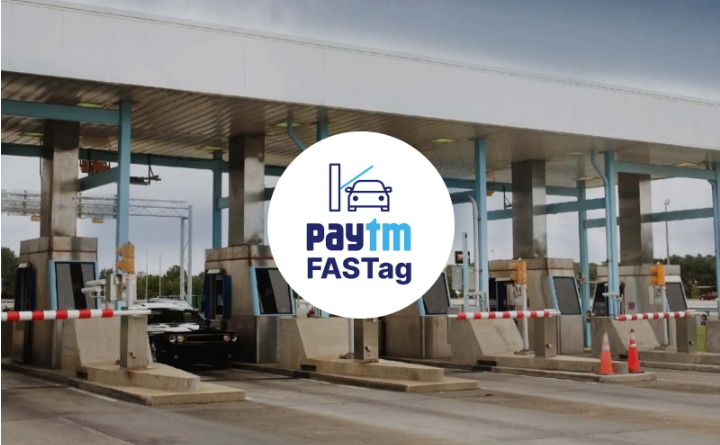No more toll on highways? Here’s what Nitin Gadkari said

No Toll - Nitin Gadkari
Union Road Transport and Highways Minister Nitin Gadkari, said that the Centre will introduce a satellite-based toll collection system to replace the current system of toll collection. The upcoming system will deduct money from an individual’s bank account based on the distance they have travelled, Gadkari explained.
As per the NHAI (National Highways Authority of India), it is mandatory to use the FASTags. The rule has been effective since February 2021 and applies to all commercial and private vehicles. According to the new FASTag rules NHAI, in case the FASTag does not work at the toll plaza, the toll fee will be doubled.
Traveling through toll plazas on highways has become significantly easier with the advent of NHAI FASTag. This electronic toll collection system not only saves time but also ensures smoother traffic flow. However, to optimize this technology and enjoy a seamless experience, it’s essential to familiarize yourself with the rules and regulations governing NHAI FASTag usage.
In this article, we will present a detailed overview of NHAI FASTag rules, enabling you to make well-informed decisions and facilitating a hassle-free journey through toll plazas.
Updated FASTag Rules and Regulations:
Vehicle owners should take note of the following recent NHAI FASTag rules and regulations:
1. Mandatory FASTag Usage:
According to NHAI (National Highways Authority of India), FASTags are compulsory for all vehicles, both commercial and private, since February 2021.
2. Functional FASTag Requirement:
Under the new FASTag regulations, if the FASTag fails to function at the toll plaza, the toll fee will be doubled. Hence, it is crucial to ensure that the RFID barcode is in proper condition, and the FASTag wallet maintains a sufficient balance.
3. The 10-Second FASTag Rule:
As per NHAI guidelines, the waiting time at toll plazas must not exceed 10 seconds. If the waiting period exceeds this limit, drivers are not liable to pay any toll fee.
4. Validity Check:
FASTags have a validity period of five years. Vehicle owners must recharge their FASTags in a timely manner and maintain the required balance while traveling on national highways.
5. Single FASTag per Vehicle:
Each vehicle can be associated with only one FASTag, linked to its registration number. Using one FASTag for multiple vehicles may result in penalties. Owners with multiple vehicles should obtain separate FASTags for each.
6. Vehicle Queue Limit:
As per NHAI FASTag regulations, queues at toll booths should not extend beyond 100 meters. Toll lanes are marked with a yellow line at this distance. If the vehicle queue exceeds this limit, drivers are exempt from paying toll fees and can continue their journey, ensuring traffic flow management.
7. Third-Party Insurance Requirement:
Under the Motor Vehicles Act 1988, vehicle owners must possess third-party insurance, which necessitates having a FASTag linked to the vehicle’s registration number.
By adhering to these NHAI FASTag rules and regulations, travelers can enjoy a smoother and more efficient toll plaza experience while contributing to enhanced traffic management on highways.
Advantages of FASTag
Below are the benefits that vehicle owners or drivers can enjoy upon installing FASTag:
1. Convenient Online Recharge: FASTag recharge can be effortlessly completed online, eliminating the need for any tedious processes. Recharge can be swiftly done through various payment modes such as RTGS, NEFT, UPI, credit/debit cards, or using Paytm FASTag services, ensuring the maintenance of the FASTag wallet’s balance. Additionally, the NHAI wallet, a prepaid wallet, can also be recharged using debit cards, UPI, NEFT, etc.
2. Toll Expense Tracking: Transaction details are sent as SMS alerts to the registered mobile number, enabling users to monitor the toll expenses incurred during their travels at toll booths.
3. Time and Fuel Savings: The adoption of electronic payment methods eliminates the need for drivers to wait in lengthy queues or make cash payments at toll plazas. Vehicles can smoothly pass through the toll plaza, and the fee is automatically deducted through the barcode. This not only saves time but also reduces fuel consumption, making it an environmentally friendly option. Moreover, this cashless payment process eliminates the need for physical receipts, reducing paper usage.
4. Monthly Travel Pass: Regular travelers have the option to convert their regular or monthly passes into FASTag passes. An online application process is available for corporates and fleet owners.
5. Robust Online Portal: A dedicated online portal allows users to request replacements for damaged FASTags and access FASTag account details. Users can also track all transactions through the FASTag web portal.
6. Simple Registration Process: FASTag registration is quick and straightforward. Users can register by visiting their preferred bank branch or online through respective portals.
7. Long-term Validity: FASTags have a validity of five years, alleviating concerns about validity and account balance. Users can re-register after five years for continued seamless journeys.
In conclusion,
FASTag facilitates the automated deduction of tolls, thereby ensuring smooth traffic flow and alleviating the hassles encountered by travelers. Nonetheless, being acquainted with the FASTag regulations established by the NHAI is crucial as it empowers you to maximize their benefits and enhances your overall travel experience on national highways.
Nitin Gadkari says toll system to end in India; here’s what will replace it?




